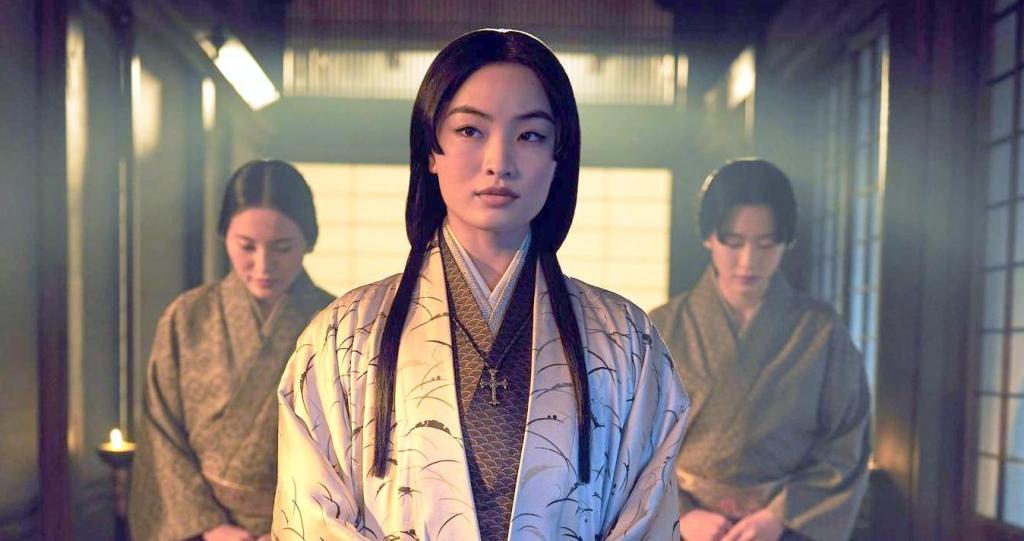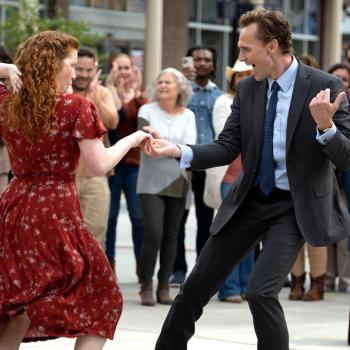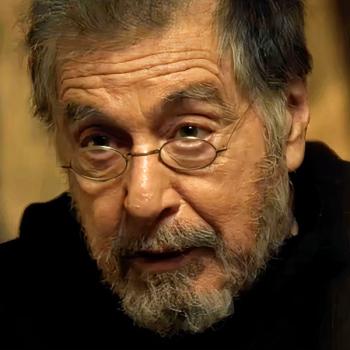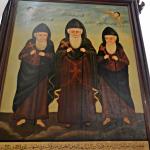Back in 1980, NBC’s miniseries adaptation of James Clavell’s 1975 historical novel Shōgun landed with a bang. Starring heartthrob Richard Chamberlain as a British privateer in 1600 feudal Japan, it set off a craze for all things Japanese — and for miniseries (building on 1977’s Roots).
I’ll admit to fear and trepidation back in February, when I sat down to watch the new, 10-episode version of Shōgun airing on FX and streaming on Hulu. I needn’t have worried. The 2024 Shōgun is different from the 1980, but in no way worse — and in many ways, better than I expected.
And how does it treat Catholicism? I’ll get to that.
(Mild language warning on the trailer.)
What Is Shōgun About?
As I said up top, the story begins with the arrival of John Blackthorne (Cosmo Jarvis), a British privateer aboard a Dutch sailing vessel that shipwrecks off the coast of Japan in 1600. He’s no explorer. As described by Britannia.com, a privateer is “a pirate with papers.”
The Real Blackthorne
Blackthorne is based on the real-life Brit William Adams, the beginning of whose story closely tracks Blackthorne’s. In the interest of avoiding spoilers, you can read more about him here, and more about the real-life Japanese power struggle here.
At the behest of the government of Britain’s Queen Elizabeth I, Blackthorne’s there to disrupt the established Spanish and Portuguese trade in Asia (which came with Jesuit missionaries). He’s an adamant and very vocal anti-Catholic Protestant, but mostly, his mission is about money.
The Catholic Spanish and Portuguese pioneered trading in China, Japan and surrounding areas, and the Anglican Brits want a piece of it.
As as aside, being an American of Irish ancestry, it’s a real howler to hear an Englishman complaining about how other European countries carve up new lands seeking profit. Heh.
In Japan, Blackthorne finds himself in the middle of a brewing civil war among feudal lords vying for power in the wake of the death of a ruler, whose heir is just a child.
The Real Mariko
His guide is Lady Toda Mariko (Anna Sawai) — surname goes first — an enigmatic, unhappily married noblewoman. A convert to Catholicism, she’s loosely based on Lady Hosokawa Gracia, a Catholic who was embroiled in the real-life political struggle that inspired Clavell’s fiction (but who, in real life, never met Adams).
As the lone survivor of her family, sentenced to death when her father was accused of treachery, Mariko is haunted and melancholy.
Mariko is fluent in Portuguese and English, having been taught by Portuguese Jesuit missionaries. So, her liege lord, Yoshii Toranaga (actor and producer Hiroyuki Sanada) assigns her to translate for Blackthorne, who also speaks Portuguese.
(Mariko’s on-the-fly editing between Blackthorne’s words and what she says he said offers moments of unexpected humor.)
While he is openly and relentlessly hostile to all things Catholic, Blackthorne does warm up to Mariko, and vice versa. But both are at the mercy of forces larger than themselves.
Is Shōgun Historically Accurate?
More or less. Clavell took real Japanese history and fictionalized it.
Some critics of the 1980 miniseries complained that Blackthorne — while based on a real person — was too central to the plot, at the expense of Japanese characters. But, considering the production cast Chamberlain, an established star, that’s no surprise.
Here, while Jarvis does great work in the role, he’s hardly better known to American audiences than the rest of the cast, which includes many Japanese actors who’ve never worked outside of their homeland.
In a nod to modern sensibilities, the American executive-producing team of spouses Justin Marks and Rachel Kondo (who is of Japanese descent) went to great lengths to ensure period accuracy in setting (filming actually took place around Vancouver, Canada), costuming and language.
They also made Blackthorne, rather than the central character, just one of the major figures in the overall power struggle.
And, as might be expected these days, much attention is focused on Mariko. But, unlike a lot of “you go, girl”-ness that we see today, where female characters are overemphasized and portrayed as superior in every way, Mariko’s abilities don’t exceed what we saw in 1980 — and are realistic for the period.
Mariko is also hardly more impressive than Hosokawa Gracia, whose story is told here:
Also, this story takes place less than 20 years before the brutal persecution of Christians began in Japan, as depicted in the Martin Scorsese film Silence, based on the novel by Shūsaku Endō. More on that here.
Being Faithful to the Truth of the Era
Shōgun succeeds where many productions today fail. No character here represents a modern political or social ideology. They’re all humans, caught up in a struggle in a particular place and time. Their actions and attitudes are also appropriate for the place and time — with no one expressing anachronistic contemporary ideas.
Blackthorne does speak negatively about his homeland, especially the city of London, and his hygiene and habits are definitely not equal to Japanese standards. But, then, he’s an ordinary Englishman sojourning among the highest ranks of polite Japanese society.
If one can imagine an ordinary Japanese sailor taken to the palaces, manor homes and cathedrals of Renaissance Europe, he would probably be just as out of place and amazed.
How James Clavell Imagined the Japanese World of Shōgun
Clavell himself (whose daughter Michaela is an executive producer on Shōgun) seems to have had a deep appreciation for Asian culture — perhaps at the expense of respect for his own, at least in Shōgun.
Born in Australia, later an American, and held as a prisoner of the Japanese during World War II, Clavell — a filmmaker, screenwriter and prolific novelist — did have a broad experience of the world.
But that doesn’t mean he always got it right, from a Japanese perspective.
Issues With Clavell’s Novel
A review in the Tokyo Weekender explains the many ways the miniseries versions avoid the pitfalls of Clavell’s novel, from its treatment of the female characters to its depiction of samurai life.
The historical confusion in Shogun is ultimately a problem with the novel, not the miniseries. As an adaptation, the miniseries had to stick with the original, needlessly made-up names while trying to fix as many of the book’s other problems without straying too far from it.
A historian said of Clavell’s book:
Whereas Western man, as symbolised by Blackthorne, is depicted as ridden with shame over sex, obsessed with a fear of death, raised on an unwholesome diet of animal flesh and alcohol, and terrified of bathing, the Japanese are represented as paragons in each particular. They view sex and nudity as wholly ‘natural’, are able to face death with composure and even eagerness, eat only fish (preferably raw), rice, and pickles, and of course are wholly addicted to the pleasures of the hot bath.
It is precisely this rather didactic contrast that gives Shōgun so much of its interest, both for the average reader and for the historian. Clavell is in effect delivering a sermon on the errant ways of the West. More specifically, he is delivering a polemic against the Christian church for instilling in Western man his (in Clavell’s view) distorted attitudes to sex, death, and cleanliness.
This anti-Christian tone runs throughout Shōgun and manifests itself most clearly in the depiction of the European Jesuits. Although no responsible historian would claim that the Jesuits were without their faults as missionaries in Japan, it is hard to find the priests of Shōgun as anything but caricatures.
That’s not the case in the miniseries version of Shōgun.
Catholicism in Shōgun
There’s no doubt that the Jesuit missionaries were entwined with both the Spanish and Portuguese governments, but they weren’t the government itself — which ran the trade routes.
While the priests in Shōgun know where they stand — between the Japanese regime and their own rulers — at least one of them, Mariko’s confessor Father Martin (Tommy Bastow), is portrayed as thoughtful and sincere in his faith.
Catholicism is a world religion. It belongs solely to no one culture nor one group of people. Within the limits of dogma and Sacred Tradition, each culture that embraces it brings its own unique ways of worship.
It was no different for the Catholics of feudal Japan, but there are some things in that culture that stand in opposition to Catholic teaching. As a woman caught between two worlds, Mariko is faced with hard choices. But, still, this is fiction, not history.
Mariko, Sex and Death (SOME SPOILERS)
Both as a Catholic and a highborn, married Japanese woman, if she values her salvation and her very life, Mariko should never have sex outside her marriage — let alone with a “barbarian.” And yet …
Well, we can say that this romance came from Clavell’s novel, and it’s not necessarily consistent with either Mariko’s faith or her situation in Japanese society.
And then there’s the ritual suicide.
In the penultimate episode, Mariko is faced with the prospect of her duty to her liege lord compelling her to commit suicide. I worried how this would be handled, but as it turns out, Shōgun dealt with it in a rather graceful way.
Mariko acknowledges the potential mortal sin and tries to find a way around it. When that falls through, she realizes that her duty will result in her eternal condemnation. So, rather than rationalizing her way around Hell, she accepts it as the cost of doing her duty.
So, does she kill herself? You’ll have to watch to find out, but the solution in the story is elegant.
Should You Watch Shōgun?
I say, absolutely, with the understanding that there is some language, sexual situations, a bit of nudity, and lots of violence, so I’d keep it to mature middle-schoolers and up.
Also, like Netflix’s The Crown, which wove fictionalized stories with real characters, and HBO’s The Gilded Age, which mixed real and fictional characters, Shōgun offers an opportunity to learn about real history. There are plenty of articles, blog posts and videos examining all aspects of the story (like the one on Hosokawa Gracia, embedded above), along with several produced as companions to the show.
By the way, along with the original version of Shōgun, which features copious Japanese dialogue, subtitled in English, Hulu also offers a second version, dubbed in English. As I did with the Korean-language Squid Game, I watched it first in the original, then did a re-watch with the dubbed version — so I could pay attention to the visuals without having to read.
Shōgun and the Future of the Miniseries
Some commentary I’ve heard suggests that, despite the critical and ratings success of Shōgun, that the era of miniseries might be coming to a close. They’re expensive and splashy, but they end after only a relatively few episodes. And in the age of of bingeing, they end very quickly.
Even FX chief Jon Landgraf (widely considered a TV sage) said:
“One of the things consumers really, really want is they want libraries,” Landgraf said. “They want to bond with the show and be able to watch that show consistently and over time. “I have a real worry about what happens to television if television doesn’t create the next generation of shows like that.”
One supposes FX could concoct a sequel or prequel to Shōgun, but, honestly, I hope that doesn’t happen. The mini ends where Clavell’s story ends, and that’s as it should be. But I’d be very interested to see what Marks and Kondo do next.
Unlike high-fantasy shows, which pick and choose elements of history (especially any era with swords), the historical drama — a good one, anyway — has to be entertaining and engrossing, while doing justice to how real people lived in the past.
Shōgun did its duty to both.
All 10 episodes are available On Demand from FX and streaming on Hulu.
Image: Anna Sawai as Lady Mariko in ‘Shōgun’/FX
Don’t miss a thing: Subscribe to all that I write at Authory.com/KateOHare.














